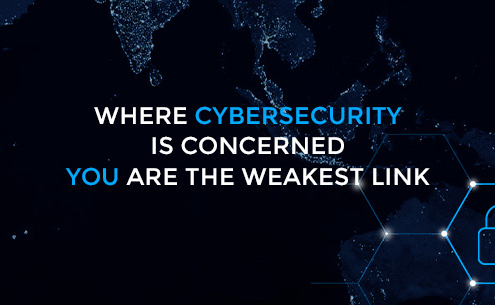5 Tips to incorporate Microlearning into your compliance training program
Microlearning has been a learning and development buzzword for the last few years. What exactly is microlearning, how can it be used in compliance training, how do we differentiate it from other forms of training and how do we reduce push-back from staff who think that it’s just more training to be undertaken in an already time-poor work environment?
This article will answer those questions and outline five things that you need to know to help improve your microlearning content as part of an overall compliance training program.
Definition
Microlearning can be defined as a targeted short-form course, knowledge (or learning) nugget, or task that focuses on a skill or idea based on a single learning objective. A course can be considered micro if it is short and to-the-point; generally, no longer than five to ten minutes in duration.
Examples of microlearning include a short e-learning course based on a single concept or scenario, an infographic or interactive PDF, a short educational or instructional (step-by-step) video or animation, or a short webinar.
1) Design for a single purpose
A “complete” training course generally focuses on several learning outcomes based on an overall topic. For example, an anti-money laundering course could focus on the risks of money laundering, customer identification, identifying red flags, terrorist financing, and monitoring and reporting. A microlearning course, on the other hand, would focus on a single learning outcome, for example placement of laundered money.
Microlearning courses should not simply be sliced and diced parts of existing courses, especially larger e-learning courses. They should be able to completed as standalone units without the need for pre-requisite information. Its goal should be the learning or development of a single skill, idea, or “knowledge nugget”.
Courses should be made available for just-in-time need. An example of this would be a Business Development Manager who is about to talk to a competitor. A simple review of a microlearning object, for instance on a smartphone app, on information sharing can provide them with the knowledge of what is legal, legitimate, or appropriate information to share.
TAKEAWAY TIP: Ensure that each microlearning course is based on one simple fact, idea, or message.
2) Be prepared for staff pushback
Compliance training receives a lot of pushback from staff, especially as the same or similar courses are rolled out every one or two years, annually or biennially. Setting additional training tasks for staff as part of an overall compliance training program may be met with protests of “too much training”. It is important to be prepared for this.
When rolling out microlearning courses, either as stand-alone entities or as a part of an overall training program, be careful not to market it as “training”. The word “training may unintentionally provoke a negative response in some employees, especially if they are already required to complete several other training courses, either online or face-to-face. Instead, consider the “what’s in it for me?” and how it will benefit them, for instance as a just-in-time information retrieval artifact. So, instead of focusing on training, focus on its information value.
The fact that it is called “micro” should alert users to the fact that what is required of them is short. When alerting staff that these courses are required, emphasise that they can be completed in only a few minutes.
TAKEAWAY TIP: Promote the benefit of the microlearning as information to seek when needed on demand.
3) Scenarios
Scenarios are a useful way of demonstrating actions and their consequences, especially in relation to compliance. Ensure that some of your microlearning content consists of a scenario that is relevant to its audience and portrays something that could happen in their day-to-day job role.
The scenario could be in a short e-learning format, a simple PDF or interactive PDF, or a video or animation.
Individual scenarios could be placed on a learning management system (LMS) together with a larger e-learning course as part of an overall compliance training program.
TAKEAWAY TIP: When creating a scenario as a microlearning course, ensure it is simple, relevant, and realistic to its unique audience.
4) Use in conjunction with other training
Microlearning can be a good introduction to a broader training session, either face-to-face or online.
When designing a compliance training program, consider introducing a topic or topics as microlearning courses prior to a more in-depth exploration of the area.
Microlearning courses can act as “teasers” for training to come and can be used with the aid of posters, emails, videos, or other promotional material, to entice and arouse curiosity. Using it this way may help to reduce fears or frustration about too much training.
It can be used post-training to help reinforce ideas, or act as just-in-time/on demand help to solve an unexpected issue, to get help or seek advice.
TAKEAWAY TIP: Use microlearning courses pre- and post- more comprehensive training to help arouse curiosity and to reinforce ideas or concepts.
5) Spaced repetition
Spaced repetition of training artifacts allows learners to be presented with a concept then shown similar content, or concepts, again so that over time, the idea can help to form behavioral change or allow an idea to be firmly planted in their brain.
We see spaced repetition in many educational apps, for instance the game-based language learning app Duolingo.
In a compliance training program, schedule reminder microlearning artifacts prior to and after additional forms of training, such as face-to-face or e-learning training sessions, or webinars. The assets could be sent via an LMS, reminder emails and/or be hosted on an intranet or company portal.
TAKEAWAY TIP: Space microlearning courses out over a time to create behavioral change and cementing ideas and concepts.
Microlearning is an important component of a compliance training program. Creating targeted content that is based on a single learning outcome will help to create behavioral change and instill essential knowledge. By having resources available on-the-go, learners can get just-in-time/on-demand information when they need it.
Originally posted on












